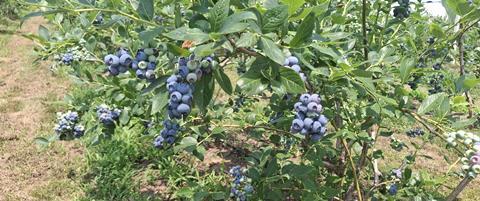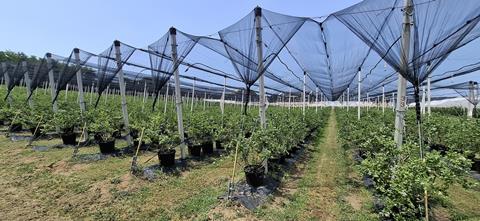Southeast Europe is emerging as a powerhouse in premium blueberry production, with increasing professionalisation and technological development helping to deliver consistently high quality

Serbia’s blueberry industry has undergone a remarkable transformation over the past decade, evolving from a modest agricultural sector into one of Europe’s most dynamic fruit production success stories.
With almost 3,000ha of modern blueberry plantations now in operation – a near fourfold increase from the 650ha recorded in 2018 – Serbia has firmly established itself as a key player in the European blueberry market.
The numbers speak volumes about this rapid growth trajectory. From 839 blueberry growers in 2018, Serbia recorded 4,161 growers in 2023. From just under 750 tonnes in 2018, Serbia now exports between 5,500 and 6,000 tonnes of premium blueberries annually, primarily to EU markets and Russia. Alongside Romania, Serbia has become the largest blueberry producer in Southeast Europe, a region that collectively exported over 12,000 tonnes of fresh blueberries in 2024.
A season of promise
Ana Bošnjak at Agro Bel System, one of Serbia’s leading blueberry producers and exporters, is optimistic about the current season. “We were fortunate that our blueberries escaped the late frost that negatively impacted stonefruit across Serbia and the region,” she explains. “The rainy weather in April had no adverse effects, and the beautiful, warm weather in late May and early June favoured fruit filling and ripening. We’re expecting excellent quality with satisfactory yields.”
This positive outlook reflects the resilience and sophistication that now characterises Serbia’s blueberry sector. Modern cultivation techniques, combined with favourable growing conditions, help Serbian producers deliver consistently high-quality fruit to discerning European retailers.
What sets Serbia’s blueberry industry apart is its professional approach to production and supply chain management. Agro Bel System exemplifies this evolution, working with over 90 cooperative farms that operate modern plantations with advanced technology. “We support them with advice, helping select technological solutions and care measures throughout the season,” Bošnjak notes. “What’s crucial is mutual trust and strict adherence to quality and food safety standards.”
This professionalisation is reflected in the industry’s composition. A significant percentage of investors in Serbian blueberry production come from other economic sectors, bringing a business-oriented perspective that elevates the entire value chain beyond traditional agriculture. The immediate payment system for delivered fruit ensures positive cash flow for growers, particularly during the harvest period when costs are highest.
Diversification and innovation
Duke remains the dominant variety in Serbian blueberry production, targeting the prime harvest window from early June to mid-July. However, forward-thinking producers are diversifying their portfolios.
“Some of our growers are beginning with Sequoia varieties, and we’re also considering this direction,” Bošnjak reveals. “Domestic supermarkets are also seeking this assortment to extend the seasonal offering and showcase newer, more attractive varieties.”
This strategic approach to varietal selection demonstrates the industry’s responsiveness to market demands. Serbian producers supply the domestic market with blueberries until mid-September, showcasing their ability to extend seasons and meet diverse consumer preferences.
Like their counterparts across Europe, Serbian blueberry producers face rising labour costs, with expenses increasing 12-15 per cent compared to the 2024 season. This challenge has prompted innovative solutions, including partnerships with workers from Asian countries and investments in renewable energy.
Agro Bel System has launched a solar energy production project to address rising energy costs, demonstrating the sector’s commitment to sustainable and cost-effective operations.
Investments in modern sorting and packaging machinery enable Serbian exporters to ship over 80 per cent of their total blueberry volume in retail packaging, meeting the specific requirements of European supermarket chains.
Traditional export destinations include Poland, Germany, Czech Republic, the Netherlands and other EU countries, with stable and growing demand creating opportunities for expansion.
The broader Southeast European blueberry sector presents compelling opportunities for European buyers seeking reliable, high-quality suppliers. Romania leads regional exports with 6,020 tonnes, while Serbia follows closely behind with 5,689 tonnes, together accounting for over 95 per cent of Southeast European blueberry exports. This concentration of production expertise and scale creates opportunities for strategic partnerships with European retailers and importers.




